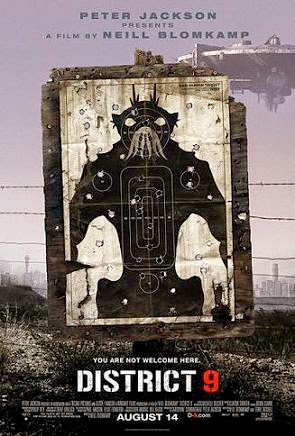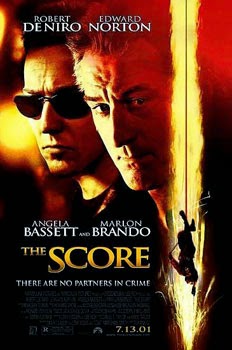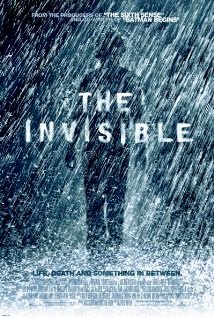Thrillers tend to play around with the audience’s experience of the film; so thrillers commonly create tension and suspense to make the audience unaware of what will happen next to cause shock and excitement.
This genre of film usually includes a lot of action and physical and emotional violence at a fast pace. Generally the plot also involves a protagonist in danger from an immoral villain. On many occasions, the villain has the upper hand through most of the story as they often have information that the protagonist doesn’t, which is used to their disadvantage. Sometimes, the information is even hidden from the audience so their surprise is heightened.
Although the feelings created by thrillers are very similar, there is a large range of sub-genres in thriller films including conspiracy thrillers, science-fiction thrillers, crime thrillers, psychological thrillers, action thrillers, spy thrillers and supernatural thrillers.
A conspiracy thriller involves the protagonist unravelling a vast plot (often without meaning to) and ends up with them confronting a powerful group of enemies.
 |
‘Awake’ is an example of a conspiracy thriller film. The story focuses on a man who suffers from anesthesia awareness and finds himself awake, but paralysed, during heart surgery. As a turn of events unravels around them, his mother tries to uncover the story hidden behind her son’s wife.
‘Snake Eyes’ is another conspiracy thriller. It is about a shady police detective who finds himself in the middle of a murder conspiracy at an important boxing match in an Atlantic City casino.
A science-fiction thriller incorporates science-based themes into the plot of the film. Classically, a sci-fi film will have heroes, villains, unexplored places, unusual missions and advanced technology. Often, a sci-fi will explore the theme of the future going bad, including plots that contain alien invasions, dystopian settings, and super-diseases.
‘Inception’ is an example of a sci-fi thriller. It is the story of a thief who steals corporate secrets through the use of dream-sharing technology and is given the task of planting an idea into the mind of a CEO.

‘District 9’ is also a sci-fi thriller and is about an extraterrestrial race forced to live in slum-like conditions on Earth who suddenly find a friend in a government agent who is exposed to their biotechnology.
A crime thriller shows a suspenseful account of a criminal with murders, robberies, chases, shootouts or heists. The storyline tends to focus on the protagonist as well as the criminal with a lot of action and psychological aspects to build tension.
‘The Usual Suspects’ is a crime thriller where a sole survivor tells of the winding events that lead up to a shocking gun battle on a boat, which begin when five criminals meet at a police lineup.

‘The Score’ is another crime thriller about an ageing thief who hopes to retire and live off his ill-gotten wealth when a young kid convinces him into doing one final heist.
A psychological thriller incorporates elements of drama and mystery film. The protagonists in psychological thrillers must rely on their mental resources to solve the situation. The suspense in this sub-genre comes from the mind, rather than from a psychical threat, until the often violent resolution.
‘The Machinist’ is an example of a psychological thriller film. It focuses an industrial worker who hasn't slept in a year and begins to doubt his own sanity.
‘Shutter Island’ is also a psychological thriller and is about a marshal who is investigating the disappearance of a murderess who escaped from a hospital for the criminally insane and is thought to be hiding somewhere nearby.
An action thriller uses physical action to create excitement within the film. Like a traditional action film, it will commonly have physical stunts, chases, fights, battles, and races. Often, these scenes will add to the sense of danger that the protagonist is facing.
‘The Expendables’ is an action thriller about a CIA operative who hires a team of mercenaries to eliminate a Latin dictator and a traitor CIA agent.
‘The Bourne Identity’ is another action thriller film concerning a man who is picked up by a fishing boat, riddled with bullets and suffering from amnesia, before racing to avoid assassins and recover his memory.
A spy thriller is a thriller in which the protagonist is normally a government agent who must obtain political or military information and take violent action against agents of a rival government or terrorists. The thriller is usually combined with action and science fiction genres.
‘The Recruit’ is an example of a spy thriller film and is about an extraordinary young CIA trainee who is asked by his mentor to help find a mole in the agency.
‘Tinker Tailor Soldier Spy’ is also a spy thriller about an espionage veteran who, in the bleak days of the Cold War, is forced from semi-retirement to uncover a Soviet agent within MI6.
A supernatural thriller film brings in a paranormal element mixed with a lot of tension, suspense and plot twists. Sometimes the protagonist and/or the villain has psychic abilities or superpowers and the plot will revolve around that.
‘The Gift’ is a supernatural thriller about a woman with visionary perception who is asked to help find a young woman who has disappeared.

‘The Invisible’ is another supernatural thriller film. It is about a boy who, after an attack, is left invisible to the living.


























